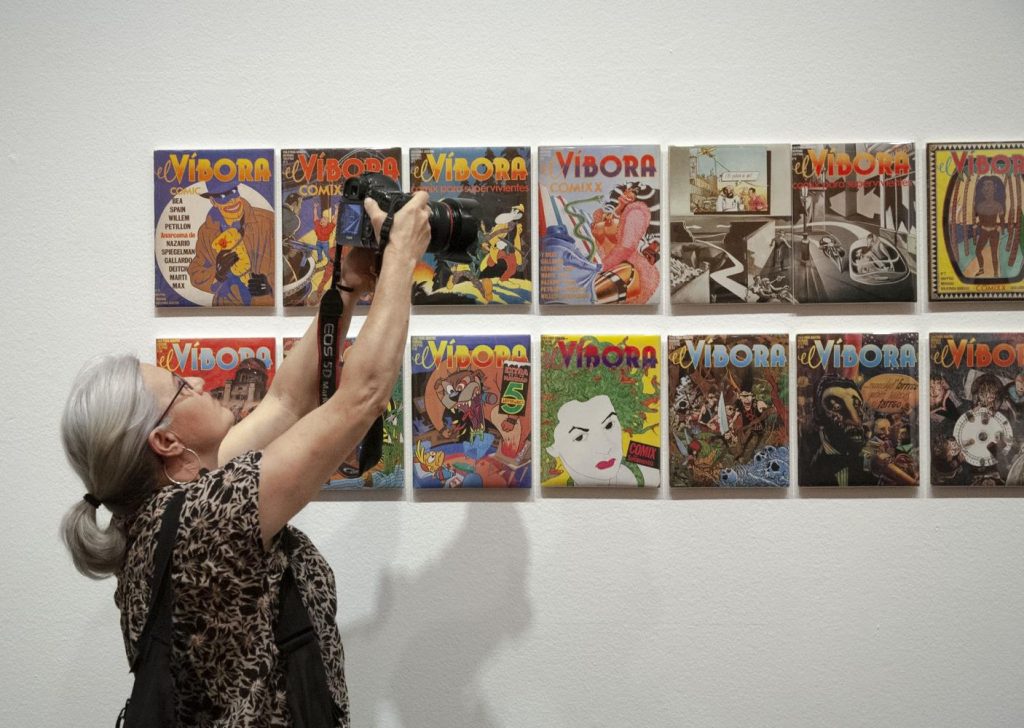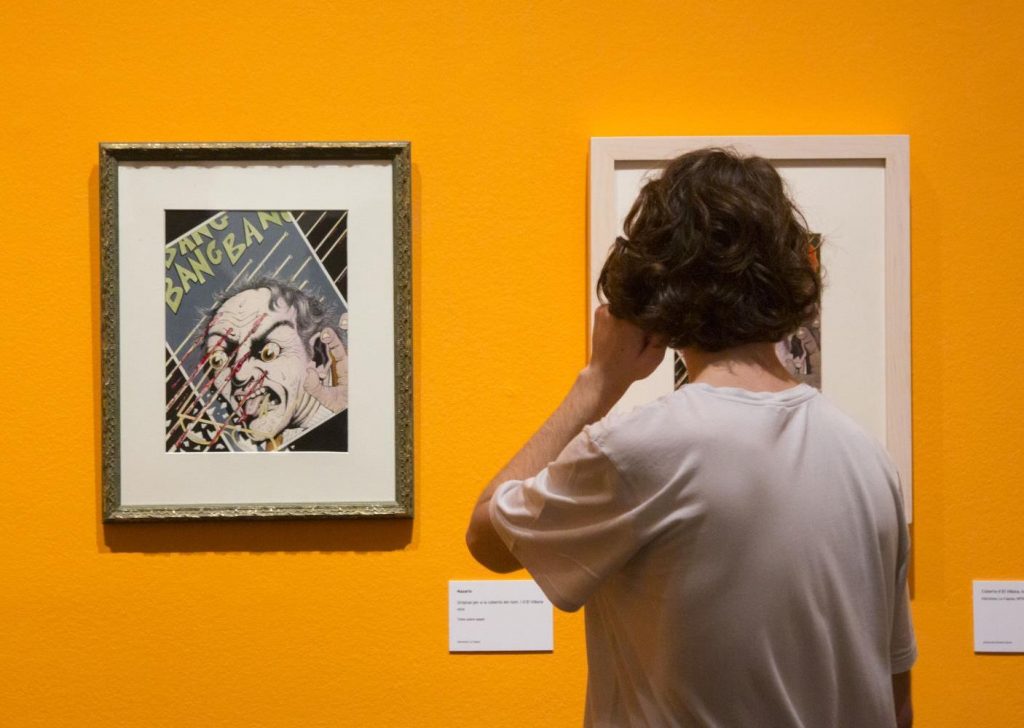Antoni Guiral
There are things that emerge by chance, or because it was really up to you to do something. In 2018, I proposed an exhibition for the Saló del Còmic of Barcelona about the magazines from the comic boom.
It’s forty years since one of the first ones emerged, 1984, and I thought it was a good moment to remember one of the milestones of the Spanish comic.
When we were preparing it, it had already arisen that one of the most important and commercial ones of these leading magazines, El Víbora, would be 40 years old in 2019 (it came out in 1979).
It wasn’t a question of repeating the topic of the Trade Fair (or Comic Barcelona) of 2019, but the agreement with the Museu Nacional d’Art de Catalunya opened the doors to proposing this exhibition. So that’s what we did, and the response of the Museu Nacional was, rapidly, very positive.
Preparing the exhibition about El Víbora
In 2018, we got down to work on the exhibition El Víbora: Comix Countercultural which you can see until 29th September at the Museu Nacional. I have been lucky enough to work with Àlex Mitrani, conservator of the museum, who from the outset was very enthusiastic about the proposal, and who is really the “co-curator” of this exhibition.
It wasn’t easy to summarize the history of comic magazine which lived for 25 years. To start with, aware that El Víbora was, initially, a magazine that took on the inheritance of the comix underground, we preferred to concentrate on the first years of the magazine, which are the ones, to a certain extent, that would mark its philosophy. That is to say, trailblazing comics, renewed graphics, which would surprise the readers for their sincerity and freshness, and which were capable of giving voice to marginal characters then, and to touch on all types of issues from a perspective of a recuperated freedom of expression.
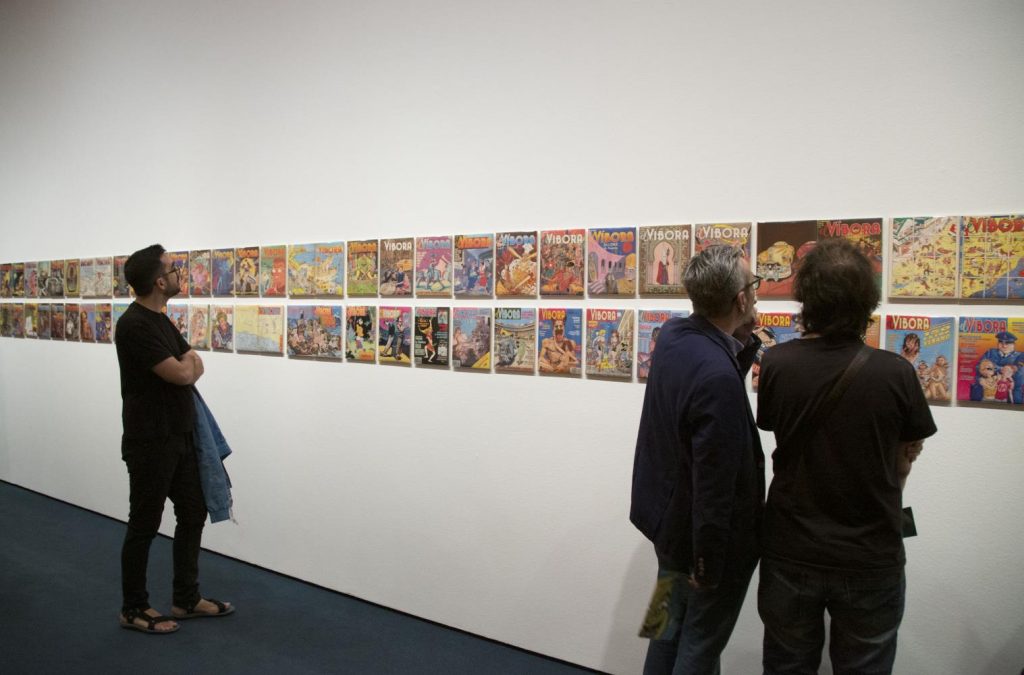
Of course, it was important to minimally explain what the comix underground consisted of, how it was born, where it came from and how and when it settled in Barcelona in 1973.
We were also aware that it was necessary to include in some way all the stages of the magazine, which from the 1990s onwards would take on what has become the so-called alternative comic.
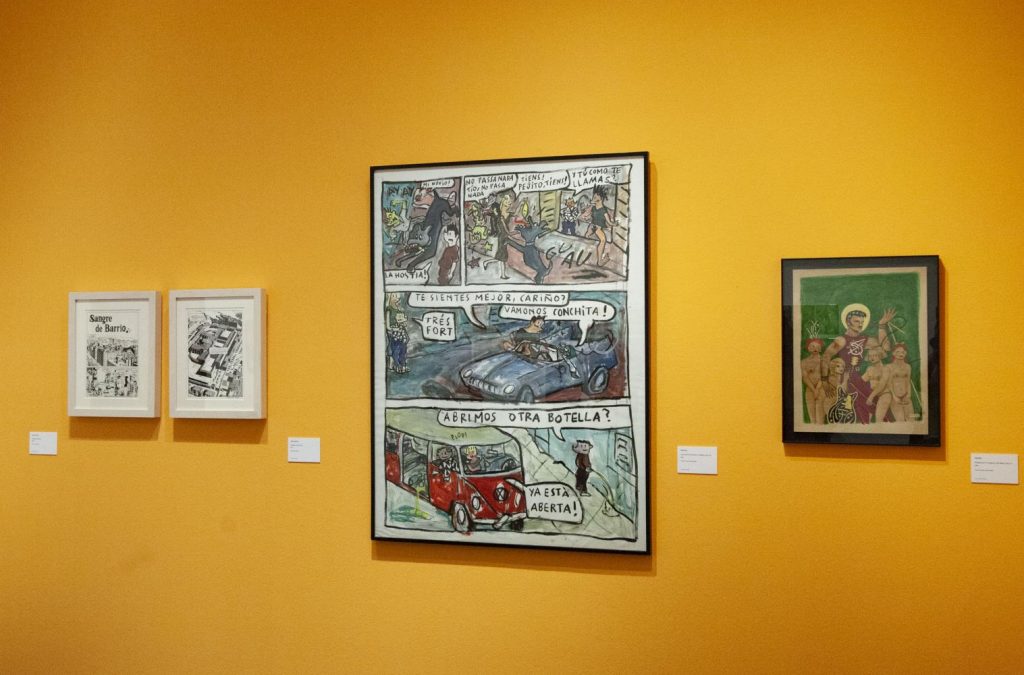
We therefore started to make a list of the authors who would be basic for the exhibition, so as to be able to enjoy their originals, always thinking about specific pieces that have a special significance in the history of this comic. Between Àlex and me, we contacted them, and also some of their heirs and with private collectors and, of course, with Ediciones La Cúpula, the publisher of El Víbora.
In the research, some originals were found that weren’t of El Víbora but the fact that they were by authors who had collaborated with the magazine and belonged to their underground period, this meant that they were a perfect complement.
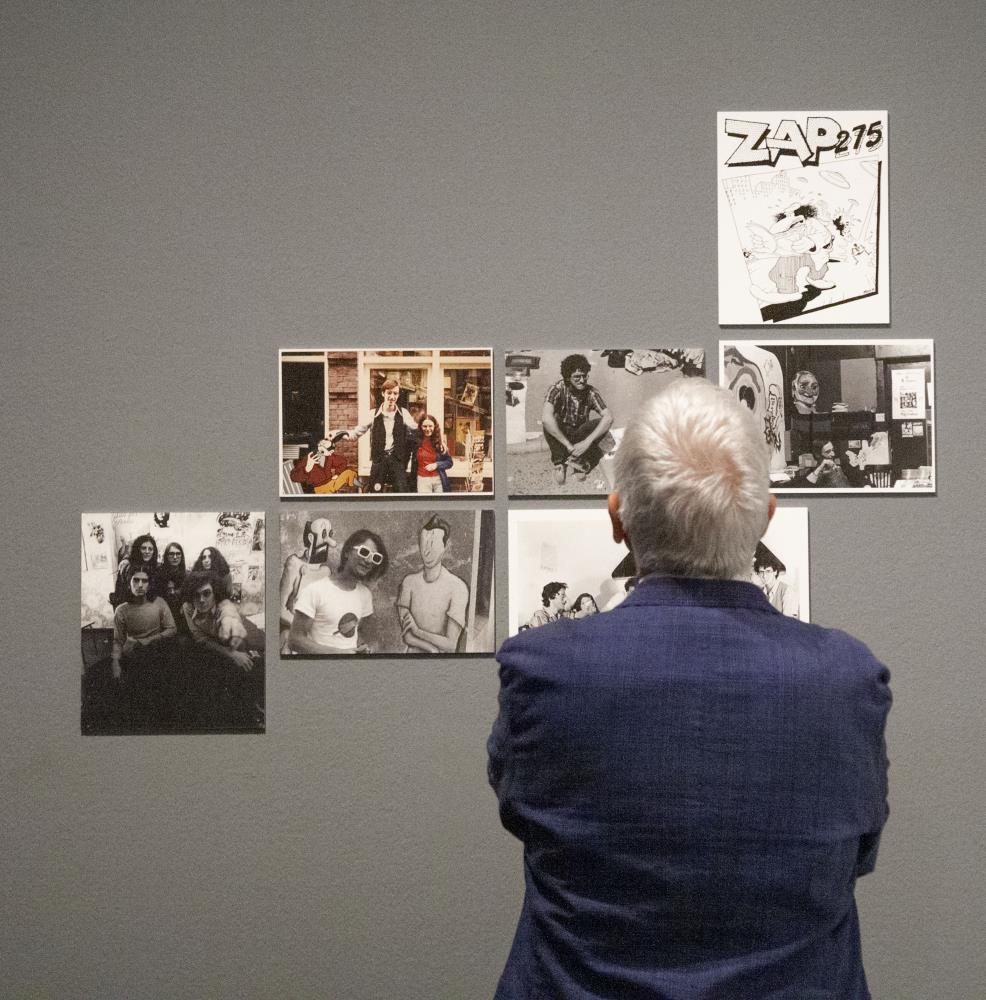
We also took into account that the physical printed magazines were important and, on the other hand, we selected some from the North American, European and Spanish underground period.
The other idea, which I think was right, was the fact of exhibiting printed copies of the magazine El Víbora, an extensive selection of covers from throughout its history, from 1979 to 2004, including some special issues. Little by little, other complementary elements emerged, with documentaries or photographs, which in some way offer a sometimes playful and sentimental view of those years. Moreover, photographs were added of the creation of the live comic “Love in Vallvidrera”, from 1980, a major piece and a large piece that had been loaned to the Museu Nacional.

It was not easy choosing the originals, but little by little everything started taking shape. The exhibition was divided, in fact, into five large parts. Firstly, the explanation of what the comix underground was and how it reached us; then, entering directly into El Víbora, three themes were chosen to distribute the originals: the urban setting, the response to power and the emergence of subversion, and eroticism and feminism. Finally, the exhibition of the covers. Everything, as I said before, complemented with documentaries, photographs and a chronology. In addition, some room texts that delved into some of the originals exhibited and the explanation of some complementary details.
A gratifying experience!
For me, it has been a unique experience to be able to put on this exhibition at the Museu Nacional. I would like to thank all the people of the Museum who have collaborated in it, for their professionalism and excellent work, their dedication at all levels. Especially to Pepe Serra, Meritxell Puig (the director of Comic Barcelona), Lluís Alabern and Àlex Mitrani. And, of course, to all of those who have loaned originals and publications.
The comic (and in this case especially El Víbora) has entered the museum (in fact it’s been there for some time), and it’s here to stay. Collaborating in this is…difficult to explain, but very satisfactory.
Related links
Comics and the museum: an unresolved story
“Gothic”, the comic: The Making Of



